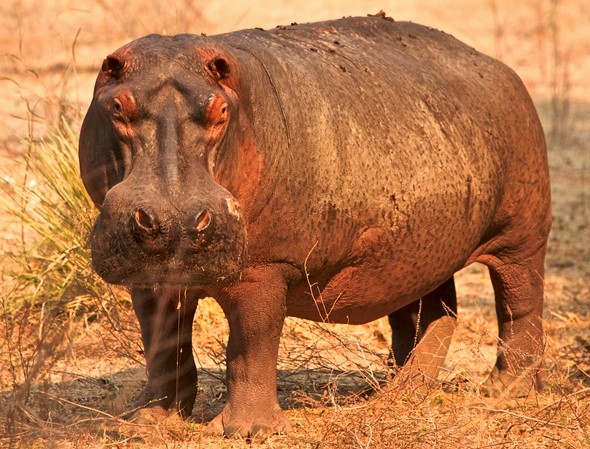It has been a long-held belief that, as a result of hunting habits, early humans were partly or even primarily responsible for the decline and eventual extinction of most of the largest mammalian species that inhabited ancient Africa. These large plant-eating mammals, called megaherbivores and weighing more than 1000 kg (2200 lb) each, displayed an incredible biodiversity and numbered more than 30 species in the past, but only a handful remain today: the hippopotamus, the black rhinoceros and white rhinoceros, four species of giraffe, and two species of African elephants (the larger African bush elephant and the smaller African forest elephant). However, more detailed analyses of the parameters and factors involved in the demise of ancient African megaherbivores suggest that humans did not cause the extinction of these mammals. Instead, changes in the ancient climate of Africa, in addition to the concomitant changes in African ecosystems and food sources, led to the extinction of the majority of these creatures. See also: Africa; African mammals; Animal evolution; Biodiversity; Elephant; Extinction; Giraffe; Global climate change; Hippopotamus; Proboscidea; Rhinoceros

Researchers recently examined African megaherbivore fossil records dating back approximately 7 million years. In addition, by analyzing other data concerned with past patterns and trends of the environmental and paleoclimatic history of Africa, including ancient atmospheric carbon dioxide (CO2) levels and carbon isotope records, the investigators concluded that falling CO2 levels and the resultant expansion of grasslands led to a steady rate of decline of the massive mammalian species inhabiting the African landscape. Prior to the change toward more abundant grasslands, the plant-eating megafauna fed on woody vegetation from trees. With the shift away from woody and dense savannas to open tropical grasslands, though, many of the megaherbivores lost their main sources of food and failed to adapt, leading to their disappearance. See also: Adaptation (biology); Carbon dioxide; Climate history; Fossil; Grassland ecosystem; Origin of grasslands; Paleoclimatology; Savanna
The researchers argue that the extinctions occurred independently of any effects that could be assigned to early humans. For example, the appearance of the first human-made stone tools used to kill and butcher animals, which occurred about 3.3 million years ago, had no bearing on the extinction of any megaherbivores. Similarly, the appearance of Homo erectus, who devised stone hand-axes about 1.9 million years ago and who ate copious amounts of meat, was seen to have no effect on the decline of the ancient African mammals. Other human-related actions or evolutionary trends over time also failed to correlate with any aspect of the megaherbivore extinctions. Instead, the rates of species decline, and thus extinction, remained constant both before and after the aforementioned dates. The determining factor, as noted by the researchers, came into play when dramatic shifts in the ancient African climate related to CO2 occurred approximately 4.6 million years ago, which is also the time when the megaherbivore extinctions began. See also: Fossil humans
Of course, the role that climate change played in the past extinction of African megaherbivores must be considered when studying present-day effects of global climate change on the survival of extant species, especially endangered ones. If climate change has caused extinctions in the past, it can also cause extinctions in the future. In fact, it already appears to be a contributing factor to present-day extinction rates. See also: Anthropocene extinction; Endangered species





